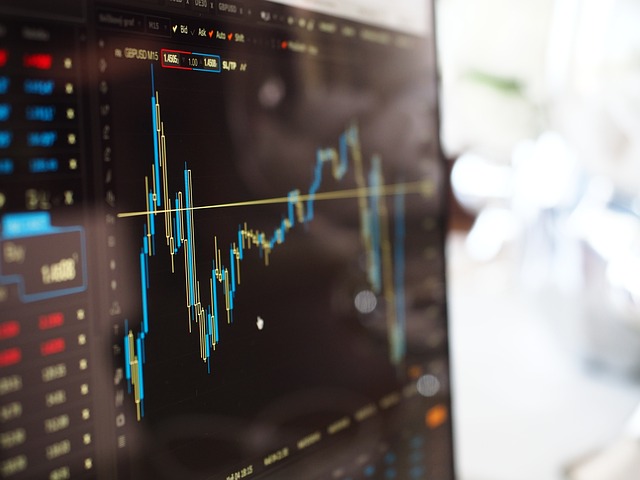Unveiling the World of Trading Robots: How They Transform Trading Practices
Author: Jameson Richman Expert
Published On: 2024-08-18
Prepared by Jameson Richman and our team of experts with over a decade of experience in cryptocurrency and digital asset analysis. Learn more about us.
In the ever-evolving landscape of financial markets, the advent of technology has led to the emergence of trading robots, also known as automated trading systems or algorithmic trading. These sophisticated tools have revolutionized the way traders operate, allowing for a high degree of efficiency and effectiveness in executing trades. In this article, we will explore the intricacies of trading robots, their benefits and drawbacks, their underlying technology, and their impact on the trading ecosystem. As a passionate observer of financial technology, I am excited to delve into these fascinating topics.

What is a Trading Robot?
A trading robot is a software program designed to analyze market data and make trading decisions on behalf of the user. These systems employ complex algorithms that assess a variety of factors, such as price movements, market trends, and trading volumes, to identify optimal trading opportunities. One of the most appealing aspects of trading robots is their ability to operate 24/7, allowing traders to capitalize on market movements without needing to be physically present at their trading desks.
Key Features of Trading Robots
1. Automation
The primary allure of trading robots lies in their automation capabilities. By relying on predefined algorithms, these systems can execute trades in a fraction of a second. This is particularly beneficial in fast-moving markets where timing can be everything. Personally, I find the level of automation quite liberating; it allows traders to focus on strategizing rather than getting bogged down with the minutiae of each trade.
2. Data Analysis
Trading robots have the capacity to analyze vast amounts of data at incredible speeds. This includes historical data, real-time market conditions, and even news sentiment analysis. Analyzing this data swiftly leads to informed decision-making, something that is difficult for human traders to replicate. In my opinion, a well-designed trading robot equips traders with an invaluable edge.
3. Backtesting Capabilities
Backtesting allows traders to evaluate the potential performance of a trading strategy using historical market data. This feature is crucial for assessing the viability of a trading strategy before deploying it in live markets. I believe that backtesting is one of the most valuable features of trading robots, as it promotes informed risk-taking and helps in fine-tuning strategies based on empirical evidence.
Advantages of Using Trading Robots
Disadvantages of Trading Robots
The Technology Behind Trading Robots
Trading robots employ a variety of technologies, ranging from simple rule-based systems to sophisticated machine learning algorithms. At the core, these robots utilize technical indicators, statistical models, and sometimes even artificial intelligence (AI) to enhance their market predictions.
Technical Indicators
Many trading robots rely on technical indicators such as Moving Averages, Bollinger Bands, and Relative Strength Index (RSI) to gauge market conditions. These indicators simplify complex data into actionable signals that inform trading decisions. Personally, I find that the right combination of indicators can significantly improve a trading robot's performance.
Machine Learning Algorithms
Advancements in AI have led to the development of machine learning algorithms that allow trading robots to learn from historical data and current market behaviors. These systems can continuously improve their strategies over time, adapting to changing market conditions. In my view, this adaptability opens up new horizons for trading strategies that were previously unimaginable.
The Impact of Trading Robots on the Trading Ecosystem
The introduction of trading robots has undeniably transformed the trading landscape. As more traders adopt these systems, the financial markets are seeing an increase in liquidity and a decrease in the time it takes to execute trades. Nevertheless, this shift also raises concerns regarding market integrity and the potential for market manipulation through algorithmic trading.
Market Efficiency
The proliferation of trading robots has made markets more efficient, reducing the bid-ask spread and enhancing price discovery. With robots constantly analyzing data, any inefficiencies in the market are quickly identified and corrected. From my perspective, this contributes to a healthier trading environment that benefits all participants.
Ethical Considerations
While trading robots offer numerous advantages, there is an ongoing ethical debate regarding their impact. Issues such as flash crashes—rapid price declines due to automated trading—raise concerns about system vulnerabilities. As an advocate for responsible trading practices, I believe that comprehensive regulations must be put in place to mitigate these risks.

Conclusion: The Future of Trading Robots
As we look to the future, trading robots are likely to continue evolving, becoming even more sophisticated and integral to trading practices. They offer an unparalleled advantage in terms of speed, efficiency, and data analysis, but they are not without their risks and limitations. Traders must approach these systems with a blend of enthusiasm and caution, embracing technology while remaining aware of its pitfalls.
In conclusion, my personal take on trading robots is one of cautious optimism. They have the potential to democratize trading and empower individuals to make informed decisions in a complex market environment. However, as in all areas of trading, prudent risk management and an understanding of market dynamics remain paramount for success.